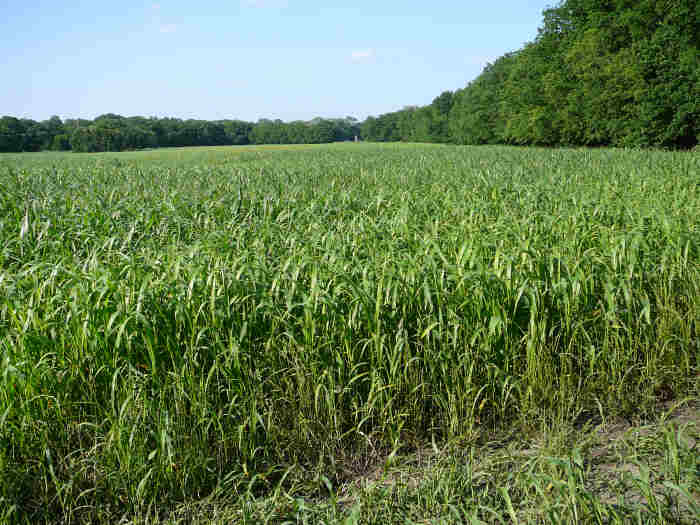
Agricultural News
Sampling Forages for Nitrate can Help Prevent Toxicity in Livestock
Thu, 09 Aug 2012 16:34:13 CDT

Nitrate is one of the major nitrogen (N) forms utilized by plants. Excessive nitrate accumulation can occur when the uptake of nitrate exceeds its utilization in plants for protein synthesis due to factors such as over N fertilization and stressful weather conditions. It can be toxic to livestock when too much nitrate is accumulated in the forage crops. Sorghum and millet have been noted as having a high potential for accumulating nitrate. In a newsletter published by OSU, producers are cautioned to watch their forage nitrate closely to avoid cattle fatality and to better manage their hay crop since many high nitrate forage samples have been seen this year. Normally, drought stress, cloudy weather and other climatic conditions as well as over fertilization with nitrogen will enhance nitrate accumulation in the plant. It is important to have hay tested.
The most reliable way to find out the level of nitrate in the hay is to collect a representative sample and have it tested by a laboratory. OSU Extension Fact Sheet PSS-2589 Collecting Forage Samples for Analysis highlights the proper techniques to collect forage samples. Samples can be submitted for nitrate and other forage quality analyses to the Soil, Water and Forage Analytical Laboratory in Stillwater through your local county extension office. Results are normally ready within 24 hours from the time the sample is received by the lab. However, many samples received at the lab were not sampled properly. More attention should be paid on sampling standing forage, such as a haygrazer by following the right procedures:
Clip at least 20 representative plants at grazing or harvesting height from the suspected area. Cut the whole plants (include leaves and heads) into 2-3" long pieces, combine and mix well in a bucket.
Fill the cut sample into a forage bag. Use the quartering method to reduce the amount if there is too much sample to send to a lab. Putting the forage bag into a plastic bag will give you more accurate moisture content, but never put plastic bags inside the forage bags.
You cand fined more information about testing forage for nitrate content by clicking here.
WebReadyTM Powered by WireReady® NSI
Top Agricultural News
More Headlines...



















